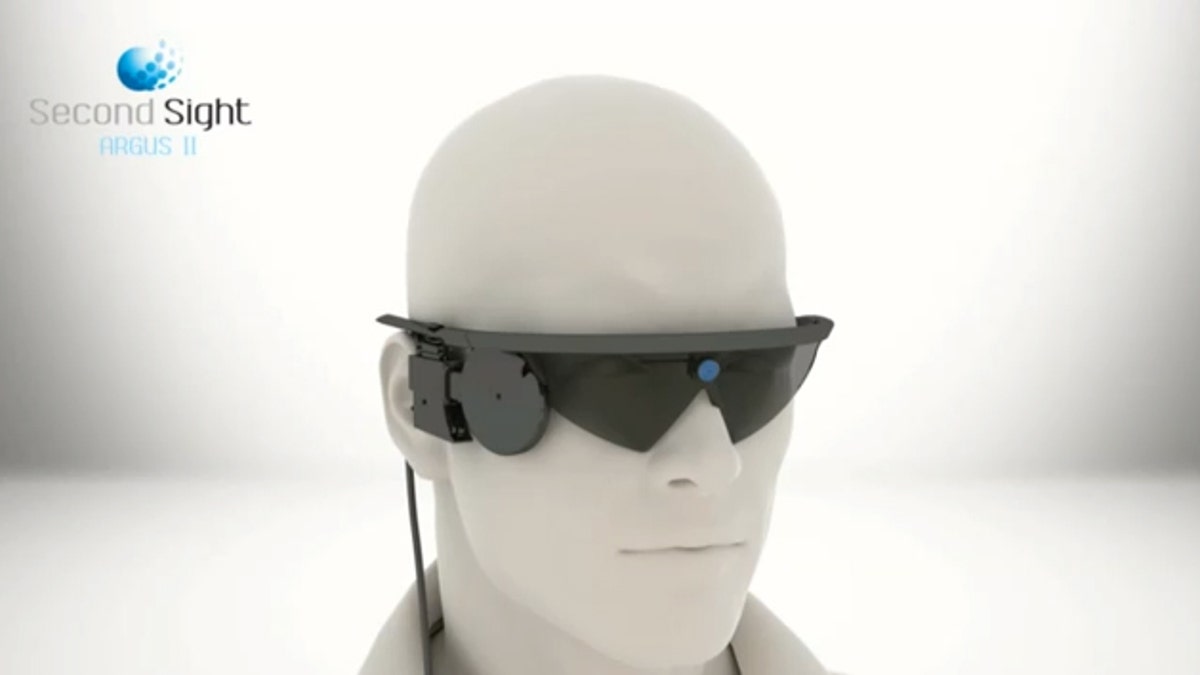
(Second Sight/YouTube)
Restoring sight to the blind has proved particularly challenging for scientists, but a new technology combining an eye implant and video-camera-enabled glasses may soon be available in the U.S.
Researchers have been pursuing the development of such a bionic eye for decades, in some cases spending hundreds of millions of dollars to tackle engineering challenges. One device designed to help people with a rare eye condition is awaiting U.S. regulatory approval. It is known as Argus II, made by Second Sight Medical Products Inc. of Sylmar, Calif. Other researchers, including at the Massachusetts Institute of Technology and Stanford University, continue to work on what they believe are even more sophisticated versions.
Second Sight's product uses what is known as a retinal prosthesis that bypasses the dead or damaged cells in the eye needed to detect light. Instead, the device reroutes visual data via the implant to parts of the eye that still work. Like other similar devices under development, it uses a video camera embedded in a pair of eyeglasses to collect visual input in the form of light and transmit it to the implant as an electrical signal.
If Argus II is approved by the Food and Drug Administration, it would be the first retinal prosthesis to hit the market in the U.S. The device is already available in Europe.
The patients most likely to benefit from these devices are those with retinitis pigmentosa, a rare disease that damages and kills the cells in the retina—a tissue layer at the back of the eye—that process light. For people with the condition, their vision grows increasingly blurry until they eventually can't see at all. Some 100,000 patients in the U.S. have the condition.
Another group of patients who may find such technology useful, scientists say, is those with severe macular degeneration. This is an age-related disease that damages the part of the eye that perceives fine detail, according to the National Eye Institute. The various retinal prostheses under development all use video cameras to send light information to chip implants. Most of them use the data to trigger electrodes in the chip to stimulate pixels of light on the retina, which are then processed normally by the brain as images.
The technology tested to date lets the wearer primarily see in black and white. It is most useful for seeing sharp contrasts, such as the painted white line of a crosswalk on a dark road. But scientists hope that they can improve the detail to eventually enable color vision in its wearers.
Barbara Campbell, a 59-year-old vocational rehabilitation counselor, has had virtually no sight since her 40s. She had the Argus II implanted in her left eye in 2009 after hearing about the device through her work at the New York state Commission for the Blind and Visually Handicapped.
Though she was told the device was experimental, Campbell thought, "anything I gain will be a plus," she said.
Campbell had a five-hour surgery at New York-Presbyterian Hospital and two months later was fitted for the video glasses. Returning to her apartment, she could see that the light fixtures in the hallway of her building were different from how she remembered they used to be.
While her vision is still limited to discerning large objects such as furniture, she said, she can now see the pole at her bus stop instead of having to locate people standing nearby. When she goes to the theater, she can follow the actors on stage, though she cannot see their facial expressions.
"It's very exciting and it's very cool," Campbell said. "I felt that my brain now had to become used to using vision again," she said.
